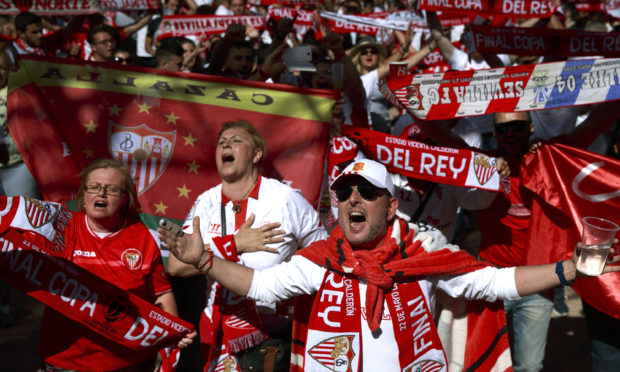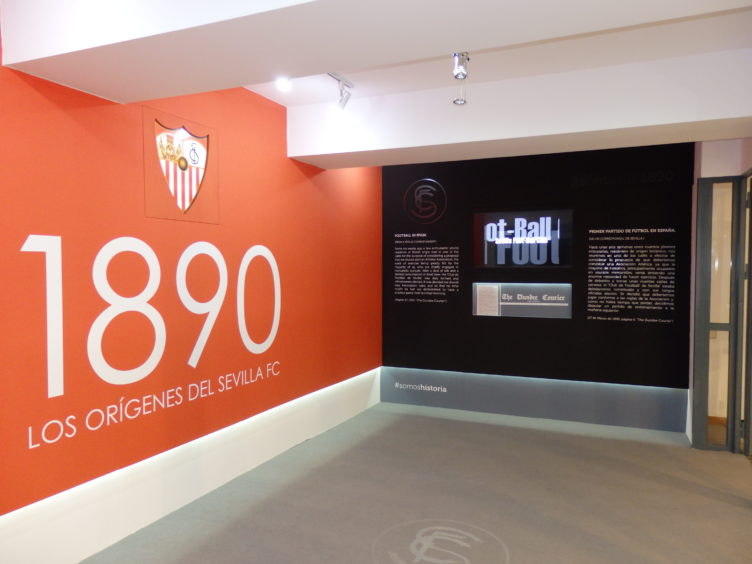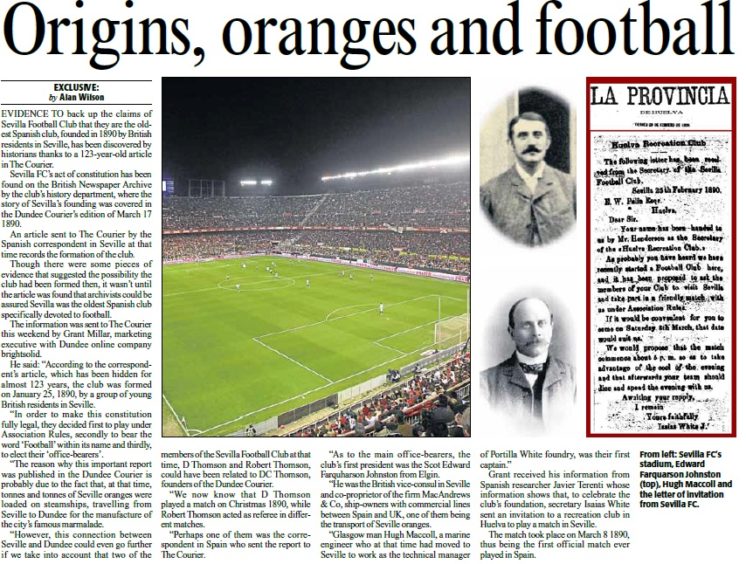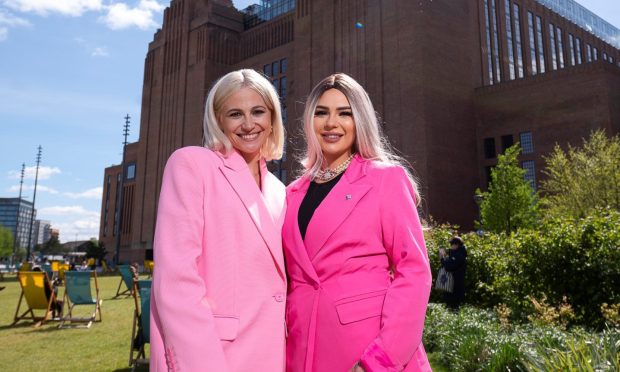Spanish football giants Sevilla are attempting to solve a Dundee mystery ahead of its 130th anniversary in January.
The Andalusian club, which has won one La Liga, five Copa del Reys and five UEFA Cups/UEFA Europa Leagues, is trying to track down the name of The Courier’s correspondent in Seville in 1890.
A Courier cutting from 1890 documented the founding of the club by British residents in Seville who met in a pub on January 25 that year to celebrate Burns Night.
Along with some Spanish friends they decided to form the country’s first official football club “after a deal of talk and a limited consumption of small beer”.
The story was written by a Seville correspondent and sent to The Courier shortly afterwards.
It confirmed Sevilla’s little-believed claims of being the oldest club in Spain.
Javier Terenti, from the history department at Sevilla FC, said: “What we know is that the article published by The Dundee Courier on March 17 1890 is written by a first person narrator, so the author was one of the club’s members.
“According to the article, he was also the correspondent in Seville for the Dundee Courier.
“Therefore, as there was a Thomson in the club, he could be related to DC Thomson, but this is just a possibility.
“That Thomson played one of the first matches Sevilla Football Club played against the Huelva Recreation Club on December 27 1890.
“According to an article published by The Field, his name started with a ‘D’, as he is mentioned as ‘D. Thomson’.
“A few years later, between 1913 and 1917, we also had a player called Duncan Thomson who perhaps could be related to the previous Thomson.
“Apart from that, there was a Robert Thomson in the area.
“I think he acted as referee in some matches in the 1890s and 1900s, but I need to check this information.”
Among the most prominent Scots was the club’s first president, EF Johnston, and first captain, Glasgow man Hugo MacColl, who later, upon returning to the UK, became chairman of Sunderland Burns Club.
The reason why this report was published in The Courier is probably due to the fact that, at that time, tonnes of Seville oranges were loaded on steamships, travelling from Seville to Dundee for the manufacture of the city’s famous marmalade.
Mr Terenti said: “As to the 130th anniversary, it could be an excellent opportunity to unveil the name of the Courier’s correspondent in Seville in 1890, especially if he was connected to DC Thomson.
“That would be another of the numerous links between Scotland and Sevilla FC.”
Sevilla, whose former players include Diego Maradona, Sergio Ramos and Dani Alves, were also managed by Scotland’s Jock Wallace from 1986-87.
Wallace, who won two trebles in three years in the 1970s at Rangers, loved Spain but didn’t speak a word of Spanish and the club eventually cited language problems as the key reason for his dismissal.












